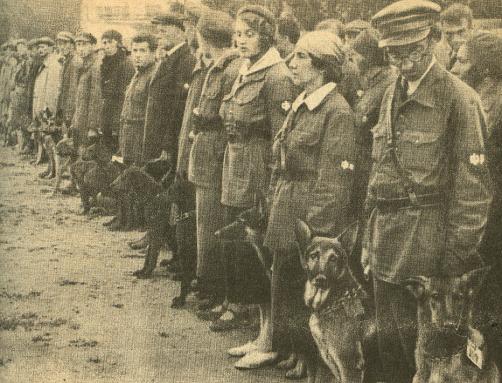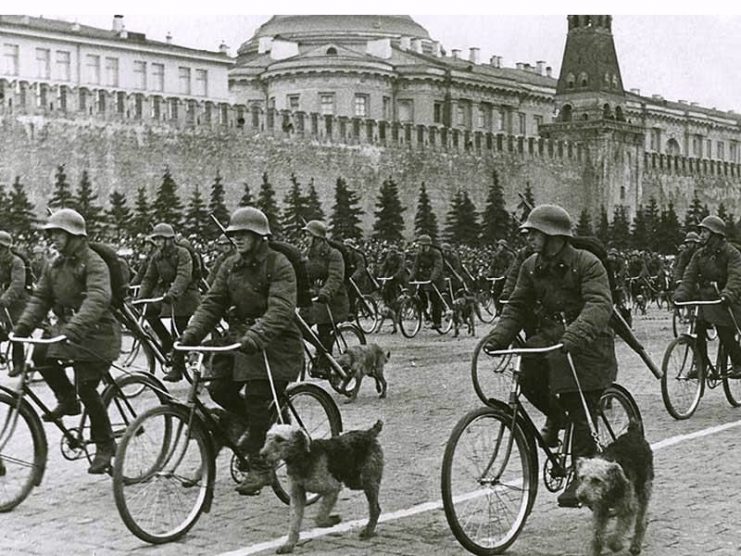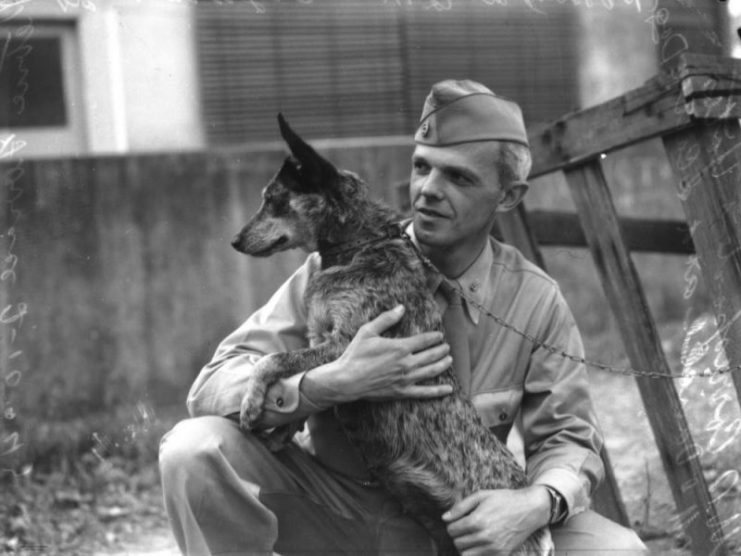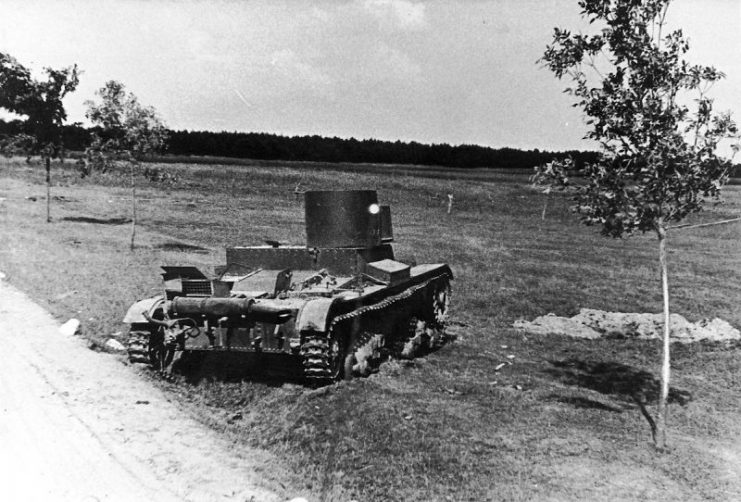The idea of using anti-tank dogs was nothing new for the Soviet Union. They had looked at the possibility back in the early 1930s and gave the weapon the name “dog mines” or “Hundminen.”
It is easy to dismiss this idea as some kind of impractical novelty. It seems ridiculous to think that bomb-carrying dogs could ever be viable weapons, especially against tanks. But there is a long history of animals being put to imaginative uses in warfare.

So, by 1935, the Soviet Army was setting up dedicated anti-tank dog units. Training the dogs was simple: they took a Pavlov’s theory type approach.
- Pavlov’s Theory: where you condition someone to associate a reward with an action. The example Pavlov used was ringing a bell whenever a dog was fed. The dog would then drool when it heard the bell as it associated the bell with food. This is called a conditioned response.
The original idea was that the dog would be equipped with a bomb that could be detonated using a timer or remote control. The dog was trained to run under a tank where it would release its bomb by using its teeth to removing the strap holding the bomb. Then it would run back to its handler.

In tests, it was a complete failure. If the dogs were confronted with anything but the most simplest of scenarios, they became confused and were unable to complete their mission.
They often returned to their handlers with the dummy bomb still attached. If that happened with a real bomb on a timer, the consequences could have been fatal to the handler and any Soviet troops nearby.

- Operation Barbarossa: the Axis surprise invasion of the Soviet Union led by the German Armed Forces. It began on June 22nd, 1941, and involved an invading force of nearly 3 million soldiers, 9,000 aircraft, and around 11,000 tanks.

- Alsatian (German Shepherd) Dog: Originated from Germany during the 19th Century. It is popular among the public as well as with both the military and law enforcement agencies. It is well-known for its agility, stamina, intelligence, and trainability.
The bomb now used was of a contact type, rather than the complex and flawed timer or remote control version. The dogs now carried a bomb with about 25lbs (11kg) of explosive, contained in a set of pouches, one on either side of the animal.
Once the bomb was activated by removing the safety pin, an 8-inch wooden spring lever that was sticking out of the top connected to the two pouches. If the lever came into contact with anything and was pushed back sufficiently far, the bomb would detonate.
The units were used between 1941 to 1942. But many problems were encountered that reduced their effectiveness greatly:
- The dogs had been trained in sterile battle conditions and were not used to moving targets or the loud noises associated with the battlefield like machine gun fire.
- Often in confusion, the dogs would return to their handlers or friendly troops, and the bomb would often go off, killing everyone.
- The Soviets had used diesel tanks to train the dogs whereas, on the battlefield, the Germans mainly used petrol-driven tanks. This meant the dog’s highly sensitive nose tended to lead them to Russian tanks, not German ones — with disastrous results.
- The Germans quickly got into the habit of shooting any dogs on the battlefield carrying anything remotely suspicious.
- As the dogs were in effect carrying out a suicide mission, some handlers got too attached to their dogs to let them do this.
- The dogs took a lot of time to train, so they were not very cost effective if they could only be used on suicide missions.
The truth is we will never know what their true effectiveness was. However, considering the obvious drawbacks and the fact they were only deployed for a short time, it would seem reasonable to say that anti-tank dogs were a novel idea with limited value, deployed only out of necessity.




No comments:
Post a Comment
I had to change the comment format on this blog due to spammers, I will open it back up again in a bit.